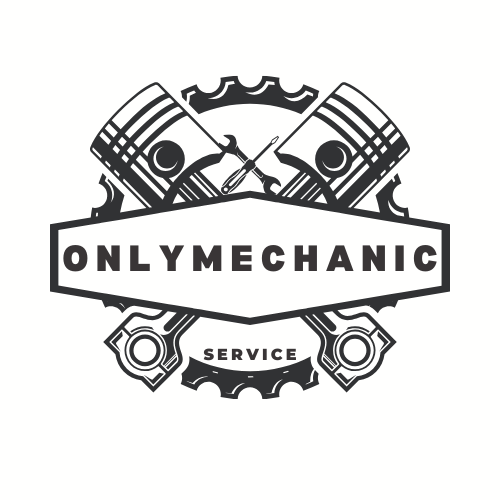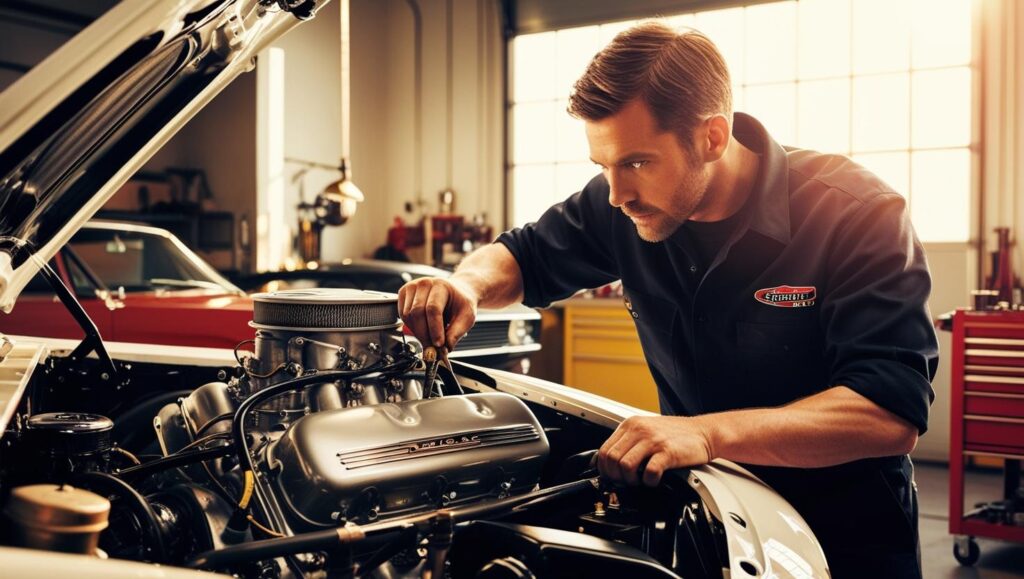Introduction — The Legend That Refuses to Quit
Few vehicles have a bloodline as clear as the Jeep Wrangler. It’s the direct descendant of the WWII Willys MB and CJ series, built around a simple promise: go anywhere, do anything. While crossovers and soft-roaders dominate today’s market, the Wrangler is unapologetically old-school. Body-on-frame construction, solid axles, removable doors, fold-down windshield — it’s a 4×4 with genuine mechanical grit. For enthusiasts and mechanics alike, the Wrangler isn’t just a vehicle; it’s a blank canvas for adventure.
Design & Packaging — Function Over Fashion
Exterior: The Wrangler’s look is iconic. Round headlights, seven-slot grille, boxy shape, and exposed hinges aren’t just nostalgia — they’re functional. The high ground clearance, short overhangs, and upright stance scream off-road intent. Whether you pick the two-door or four-door Unlimited, it looks ready to tackle a trail.
Interior: The current JL-generation Wrangler improved dramatically in comfort over the JK. You get better sound insulation, improved seating, and a more refined dashboard layout. Still, it’s utilitarian — rubberized surfaces, big knobs, and drain plugs for hose-out cleaning. Uconnect infotainment works well, but don’t expect Range Rover luxury.
Practicality: The Unlimited model’s rear seats and cargo area make it surprisingly family-friendly. Fold them down and you can haul camping gear or a full set of off-road tires. Removable tops (soft or hard) and doors give you an open-air experience no other SUV offers from the factory.
Powertrains — Gas, Diesel, and Now Plug-In Hybrid
3.6L Pentastar V6 (Standard):
- Output: About 285 hp and 260 lb-ft.
- Mechanic’s note: Proven engine across Chrysler products. Reliable if maintained; responds decently to bolt-ons. Smooth, but not particularly torquey off idle compared to turbo rivals.
2.0L Turbocharged I4:
- Output: Around 270 hp and 295 lb-ft.
- Mechanic’s note: More low-end torque than the V6. Complexity of turbo and direct injection adds maintenance considerations. Good choice for daily driving and moderate off-roading.
3.0L EcoDiesel V6 (Limited availability):
- Output: Around 260 hp and 442 lb-ft.
- Mechanic’s note: Huge torque for crawling and towing, plus better fuel economy. More expensive up front and more complex emissions equipment to maintain.
4xe Plug-In Hybrid (2.0L turbo + electric motor):
- Output: 375 hp and 470 lb-ft combined.
- Mechanic’s note: Adds weight but delivers instant electric torque off-road. Offers ~20 miles of electric-only range. Complexity rises sharply: high-voltage battery, cooling systems, and software. Exciting tech, but long-term reliability is still emerging.
Transmissions:
- 6-speed manual: Available on some trims with the V6 — a rarity today. Great for purists.
- 8-speed automatic: Smooth, more gears for crawling, and generally reliable. Mechanically stout if serviced properly.
Chassis, Suspension & Off-Road Hardware
Body-on-frame: Like a pickup truck, the Wrangler rides on a separate frame. This allows for serious articulation and durability but also means more weight and a less car-like ride.
Solid axles front and rear: Essential for off-road durability and articulation. However, it brings steering wander and a rougher ride on pavement compared to independent suspension SUVs.
Trim levels & gear:
- Sport: Basic but capable.
- Sahara: More comfort and tech for daily use.
- Rubicon: Factory off-road monster with Dana 44 axles, locking differentials, disconnecting sway bars, and big tires.
- Xtreme Recon: Adds even more ground clearance and 35-inch tires.
Mechanic’s note: From a workshop view, the Wrangler’s simple, robust underpinnings are easy to service and modify. Axle swaps, lift kits, and skid plates bolt right on.
On-Road Driving — Honest but Imperfect
The Wrangler is better on-road than ever but still no crossover. Steering is slow and vague, the ride can get bouncy, and wind noise is part of the deal — especially with a soft top. The 8-speed automatic masks the V6’s lack of low-end torque fairly well, but don’t expect sports-car acceleration unless you choose the 4xe or do engine mods.
Highway cruising: Stable enough at legal speeds, but crosswinds and big tires can require more steering correction.
Cornering: Body roll is noticeable; tires and suspension prioritize off-road grip.
Braking: Adequate but long pedal travel. Upgraded pads and rotors help on lifted or heavier builds.
Off-Road Performance — The Wrangler’s True Home
Here the Wrangler shines. The approach, departure, and breakover angles embarrass crossovers. Low-range gearing, locking diffs, and generous articulation let you climb, ford, and scramble where few vehicles can go. Even a stock Sport trim can tackle serious trails with a competent driver. The Rubicon and Xtreme Recon trims come trail-ready out of the box.
Mechanic’s note: Water fording and mudding are fun but hard on components. Regular inspection and maintenance of axle seals, driveshafts, and differentials after off-road trips is wise.
Reliability & Common Issues
Overall reliability: The Wrangler’s basic mechanicals are proven, but complexity rises with each new powertrain. Solid axles and frame construction hold up well under abuse.
Common items to watch:
- Death wobble: A violent front-end shake, usually caused by worn track bars or steering components. Easy to fix with quality parts and proper alignment.
- Soft top leaks: Common in heavy rain.
- Turbo/4xe complexity: Long-term reliability of turbo and hybrid components is still less known compared to the Pentastar V6.
- Suspension wear: Lifted Wranglers stress ball joints and bushings faster.
Maintenance tips: Regular greasing of suspension joints, diff fluid changes after water crossings, and proactive replacement of steering components keep Wranglers tight.
Cost of Ownership & Insurance
Fuel economy is modest — especially on lifted or big-tire models. Insurance varies but isn’t crazy unless you add expensive mods. Parts are plentiful and reasonably priced compared to exotic 4x4s. DIY maintenance is easy thanks to a huge knowledge base and simple mechanical layout.
Modding Potential — A Mechanic’s Playground
No modern vehicle has as deep an aftermarket as the Wrangler. Lift kits, bumpers, winches, LED lighting, snorkels, axle swaps, gears, lockers, interior organizers — the list is endless. Bolt-on mods are straightforward for experienced DIYers.
Engine tuning is less dramatic than with turbocharged sports cars, but gearing changes, lockers, and tires make far bigger real-world differences off-road. For those who want a daily driver/overlander hybrid, mild lifts and 33-inch tires with a quality suspension kit can transform a stock Wrangler without ruining road manners.
Safety & Tech
Modern Wranglers offer airbags, electronic stability control, and available driver aids like blind-spot monitoring and adaptive cruise. But crash scores lag behind crossovers due to the body-on-frame layout. The Wrangler prioritizes off-road ability and open-air fun over top-tier crash performance or advanced semi-autonomy.
The Wrangler vs. The Modern World
Where crossovers blur into one another, the Wrangler stands apart. It’s not efficient, not whisper-quiet, and not high-tech. Yet it’s authentic. In an era of all-wheel-drive crossovers with “off-road” drive modes, the Wrangler is a genuine, mechanical 4×4 — part tool, part toy. Even the 4xe hybrid keeps a real transfer case and solid axles, bridging tradition and technology without losing its soul.
Who Should Buy One? Who Shouldn’t?
Buy one if:
- You value real off-road ability and mechanical ruggedness.
- You like to customize your vehicle and tinker.
- You want open-air driving with removable doors and tops.
Don’t buy one if:
- You prioritize quiet, car-like handling.
- You’re unwilling to maintain or modify steering/suspension components.
- You want top crash-test ratings or luxury-level interior materials.
Final Verdict — A Mechanic’s Closing Thoughts
The Jeep Wrangler is the most authentic 4×4 you can buy new today. It’s not perfect on pavement and it’s not cheap to fuel, but it offers a unique blend of capability, character, and community. From a mechanic’s view, it’s satisfying to work on, endlessly modifiable, and built to be used, not just polished.
If you want an SUV that connects you to decades of off-road heritage, invites you to wrench and explore, and makes every drive an event — the Wrangler is waiting with its doors off and the trail in its sights.



